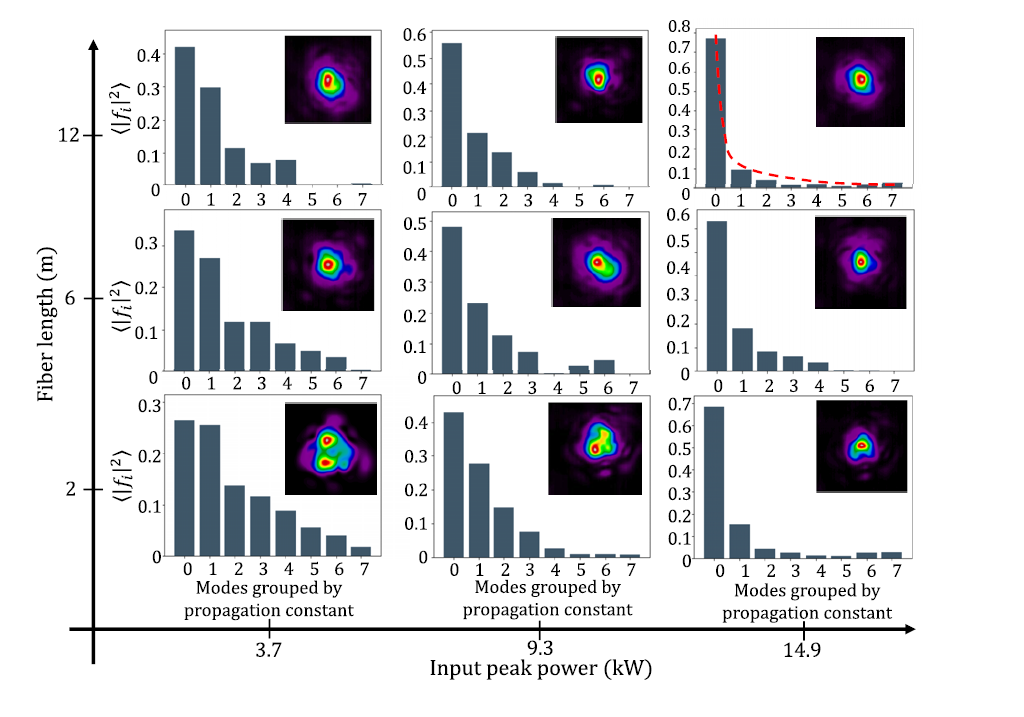
We present a direct experimental confirmation of the maximization of entropy which accompanies the thermalization
of a highly multimode light beam, upon its nonlinear propagation in standard graded-index (GRIN) optical fibers.
The spatial beam self-cleaning effect consists of the nonlinear transformation of a multimode beam at the output of a multimode fiber (MMF) from speckles into a bell shape. This is typically observed in standard graded-index (GRIN) MMFs when the beam input power overcomes a certain threshold value [1–5]. The beam self-cleaning effect can be described in a thermodynamic framework: it represents the evolution of a disordered optical state toward a state of thermal equilibrium, or maximum entropy [6,7]. While the thermodynamic model cannot inherently encompass certain properties of self-cleaning, such as its preservation of spatial coherence and increase of beam brightness [1,8], which appear to be related to modal phase-locking mechanisms [9], mode-decomposition experiments have confirmed that indeed, as the input power grows larger, the output mode power distribution of self-cleaned beams approaches the Rayleigh–Jeans (RJ) law [10,11].
